I had come to the conclusion that I must really be French, only no one had ever informed me of this fact.
Julia Child
As Olympics fans turn their eyes on France ahead of this year's Summer Games, Superprof takes a longer view. This country is lovely any time of the year, for any occasion, and for any amount of time. As a foodie, a historian, a nature lover or a devout, this nation has something you need to see.
We started our ultimate guide to France in 'Petite Bretagne' - little Britain, making our way around the country before turning inland. In our travels, we discovered a baker's dozen of France's best-kept secrets.
| Region | What to See | When to Go |
|---|---|---|
| Brittany | Rohan Castle, megaliths, gardens, coastal areas. | Year-round |
| Normandy | Mont St Michel, Étretat cliffs, gardens | Late Spring to early Autumn. |
| Calais | the Citadel, medieval monuments, Notre Dame church. | Year-round. |
| Reims | Cathedral, champagne cellars, vineyards | Year-round. |
| Alsace | Villages | Late Spring to late Autumn. |
| Mont Blanc | Mountains and glaciers, Alpine Museum, Jacques Balmat memorial. | Summer |
| Côte d'Azur | Monaco, St Tropez, Cannes, Provence lavender, the Verdon Gorge | Year-round. |
| Carcassonne | La Cité, Château Comtal, cathedral | Mid-April to end of October. |
| Biarritz | Beaches, surfing, spas | Year-round. |
| Arcachon | Pyla Dune, beaches, spas. | Year-round. |
| Dordogne | Lascaux Caves, castles | Year-round for cave and castle tours; late Spring to end of Autumn for outdoor activities. |
| Auvergne | Puy-de-Dôme, medieval towns and castles, spas. | Summer months (skiing in winter!) |
| Île-de-France | Paris - Louvre, Eiffel Tower, Opera houses, catacombs, parks and gardens, and more! | Year-round. |

Brittany

From its Celtic ties to its Gallo-Roman roots, this peninsula is home to some of the world's oldest architecture. Whether you tour Upper or Lower Brittany, a historical feast awaits you.
Rennes embraces its Celtic past, while Carnac displays prehistoric menhir arrangements. Also, discover the castle in Pontivy, and hunt for pirate loot in Saint Malo.
Celtic Britons arrived in this region in the last part of the 4th Century. They changed its name from Armorica to Brittany, then added 'Great' to Britain to distinguish between the lands.
Getting There
By boat: ferries from different UK ports, and from Cork, Ireland.
By plane: Brittany boast six airports!
By train: TVG trains from various French cities.
By road: the A11, N12, and A84 offer access by car or bus.
How Much it Costs
Walking around is free!
Best Times to Visit
Brittany's climate is a lot like the UK's, so you'll feel comfortable visiting year-round.
Normandy - The Chalk Cliffs of Étretat
Mont St Michel is Normandy's main claim to fame; touring it is one of the top day trips from Paris. But don't let that amazing abbey distract you from all that Étretat has to offer. You can get here early to catch the sunrise reflect off the white cliffs, or stay until sunset for a spectacular view.
Between those extremes, take a stroll through the picturesque town. You could even get in a round of golf, or enjoy a meal in a top-rated restaurant. The Jardins d'Étretat are not to be missed!
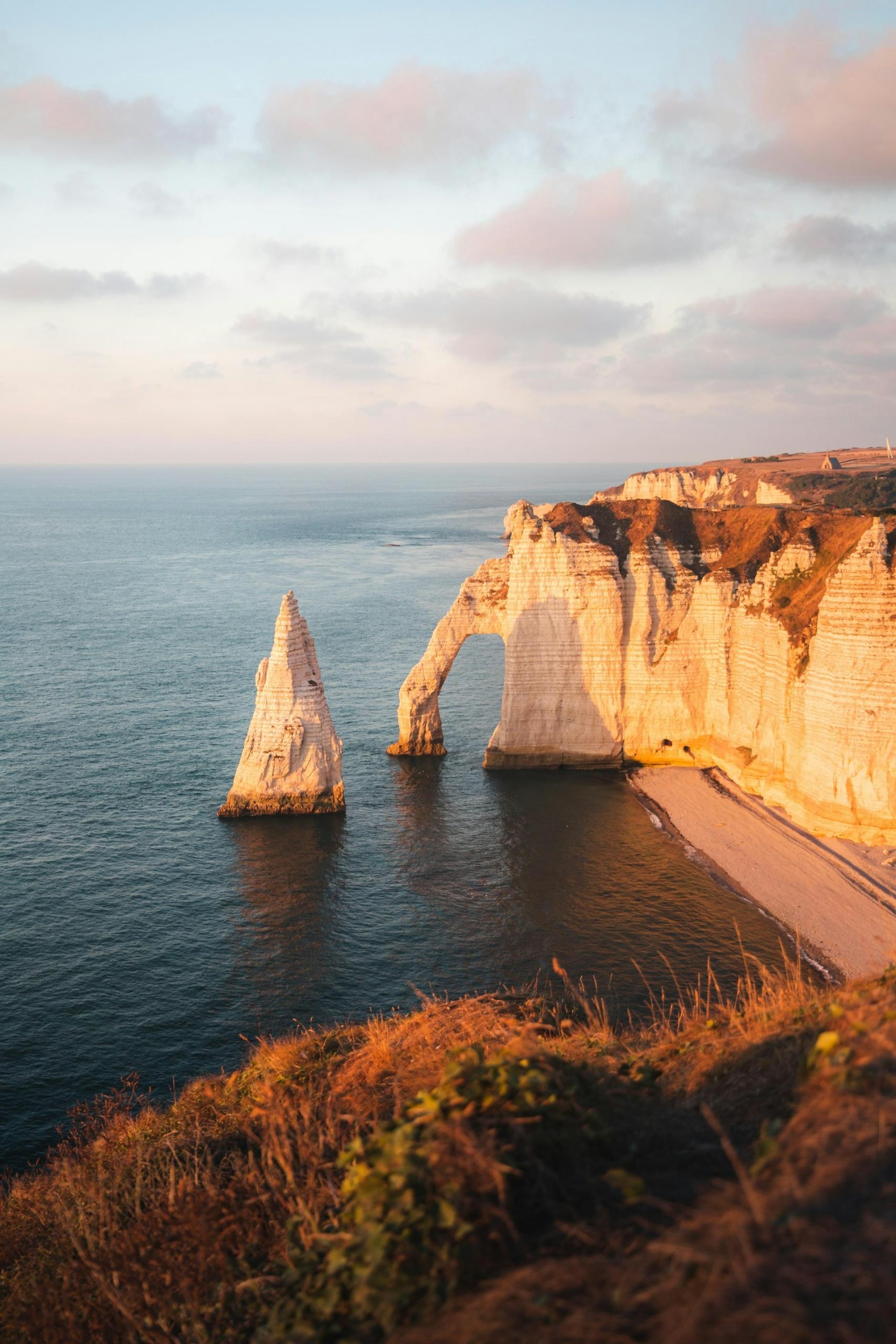
Getting There
Take the train to le Havre, and then enjoy a 35-minute ride up the coast on bus 13 (day pass: €4,20). The buses leave the train station hourly.
How Much it Costs
Walking around the cliffs and town is free. Access to the Jardin costs €14 for adults and €7,50 for children/concession.
Best Times to Visit
The climate here is a lot like southern England. To avoid the tourist crowds, plan your visit anytime from late Spring to early Autumn.
Calais
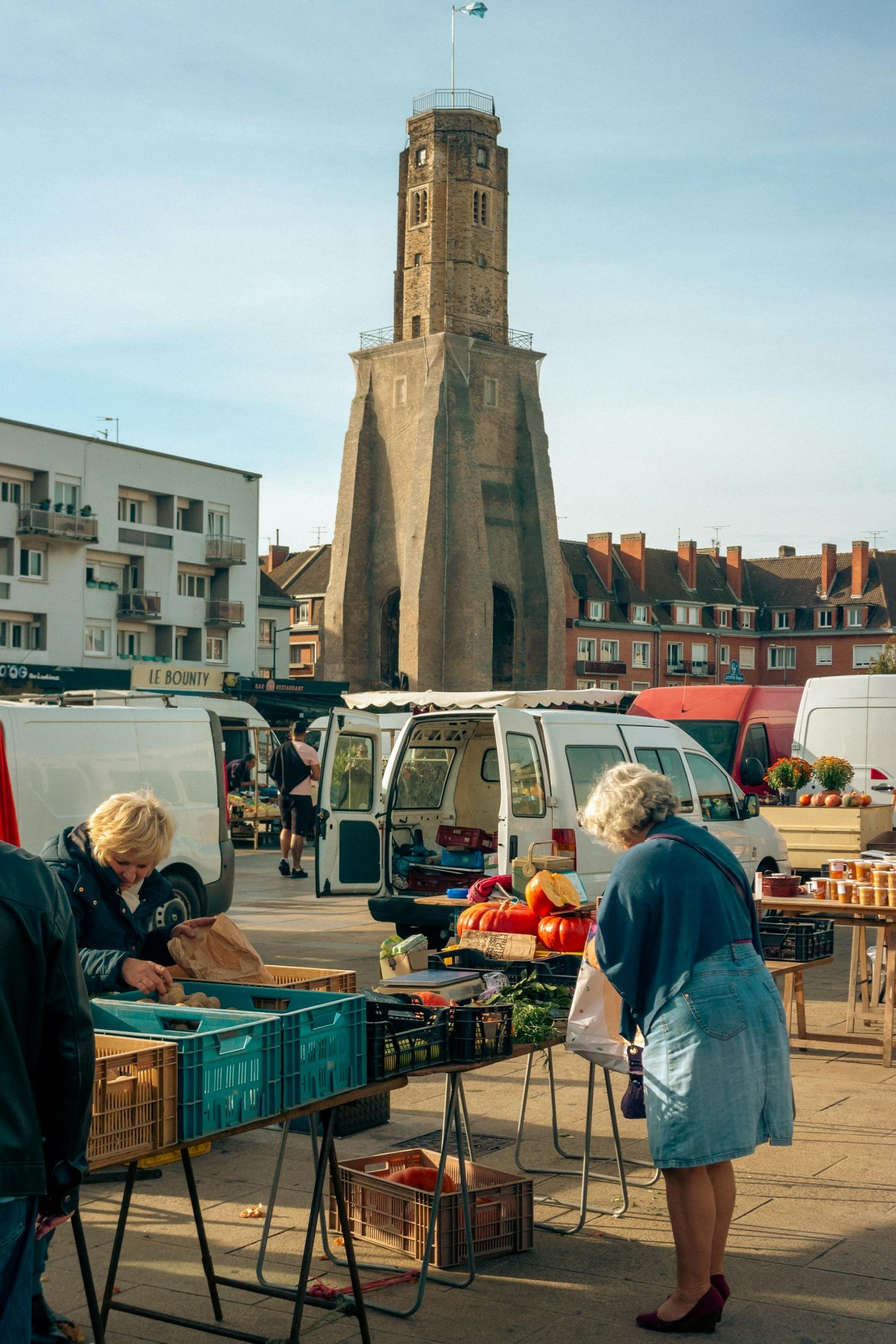
Calais is only 32 kilometres from Dover; it's the city we drive into when we visit France. Typically, we just zip through on our way to other great places to visit in France. For once, let's make this city our destination.
Calais has many notable landmarks, this guard tower among them. It watches over the Place d'Armes, a massive public square. Further afield, you'll find centuries-old relics: l'Eglise Notre Dame, the Calais Theatre, and the Citadel.
Getting There
By boat: ferries from Dover cross the Channel several times each day. A day pass starts at £25 for pedestrians; £39 for cars with up to 9 people.
By plane: Calais-Dunkerque airport suits small planes; the closest commercial airport is in Lille (a little over an hour away).
By train: you can catch the Eurostar high-speed train from London Saint Pancras station.
By car or shuttle: the Eurotunnel route takes roughly 35 minutes.
How Much it Costs
Walking around is free; visiting museums will cost a few Euros.
Best Times to Visit
Again, thanks to similar climate, you can visit Calais any time.
Reims - Champagne and Coronation
Most would not rank Reims on their Top 10 French tourist attractions, but that's their loss. Indeed, the Reims Cathedral is one of the most famous landmarks in France. This Gothic-style beacon - and the bubbly, make Reims well worth the visit.
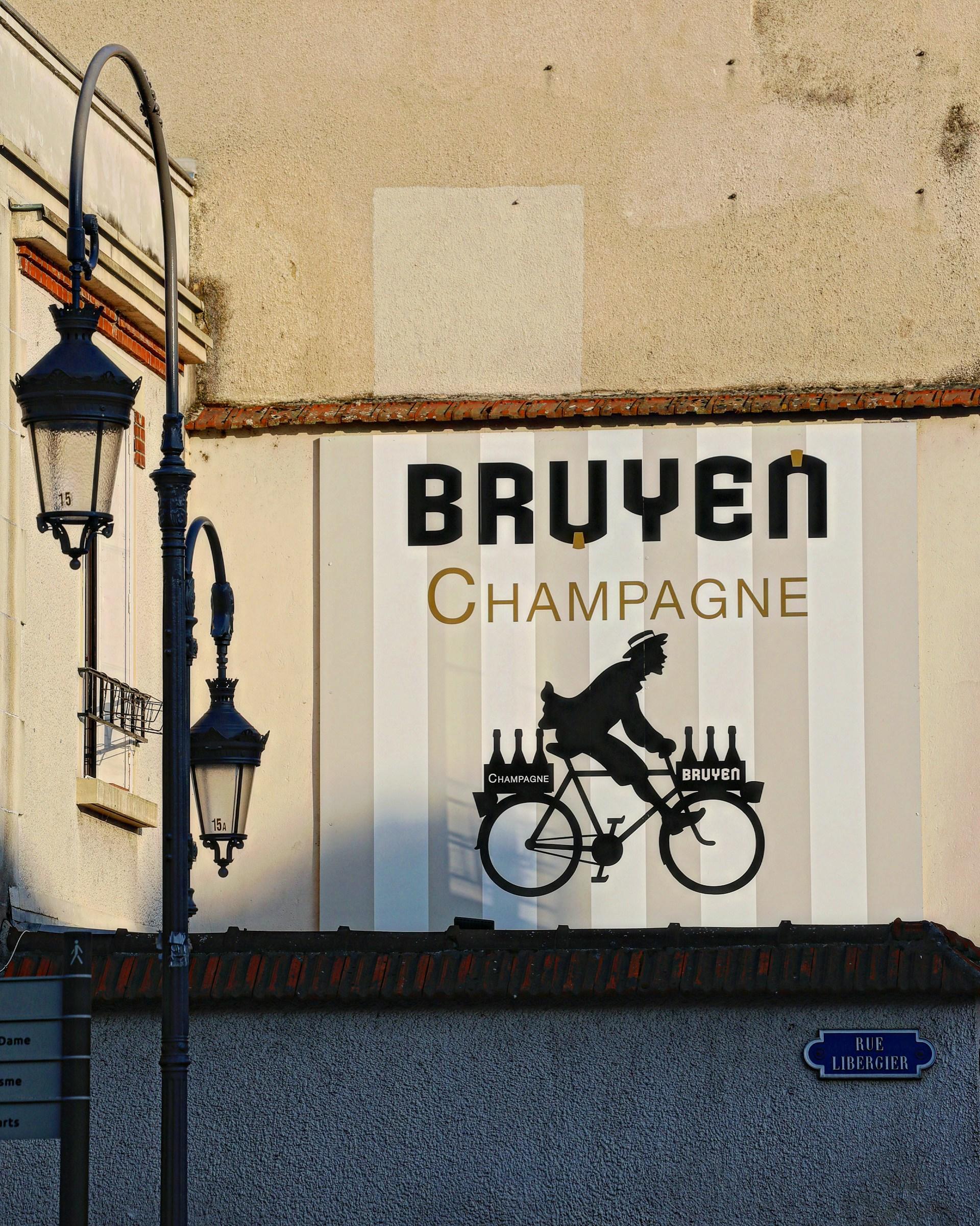
This UNESCO World Heritage Site witnessed the crowning of all but two French kings.
Getting There
Driving is an option, but taking the train is far more efficient. The Gare de Reims welcomes high-speed trains from every major French city.
What it Costs
Walking around the city is free; so are many of its attractions. However, the cost of touring wine cellars and museums can add up.
Best Times to Visit
If you don't mind cloudy skies with little rain, Reims is fine to visit year-round.
Alsace Villages
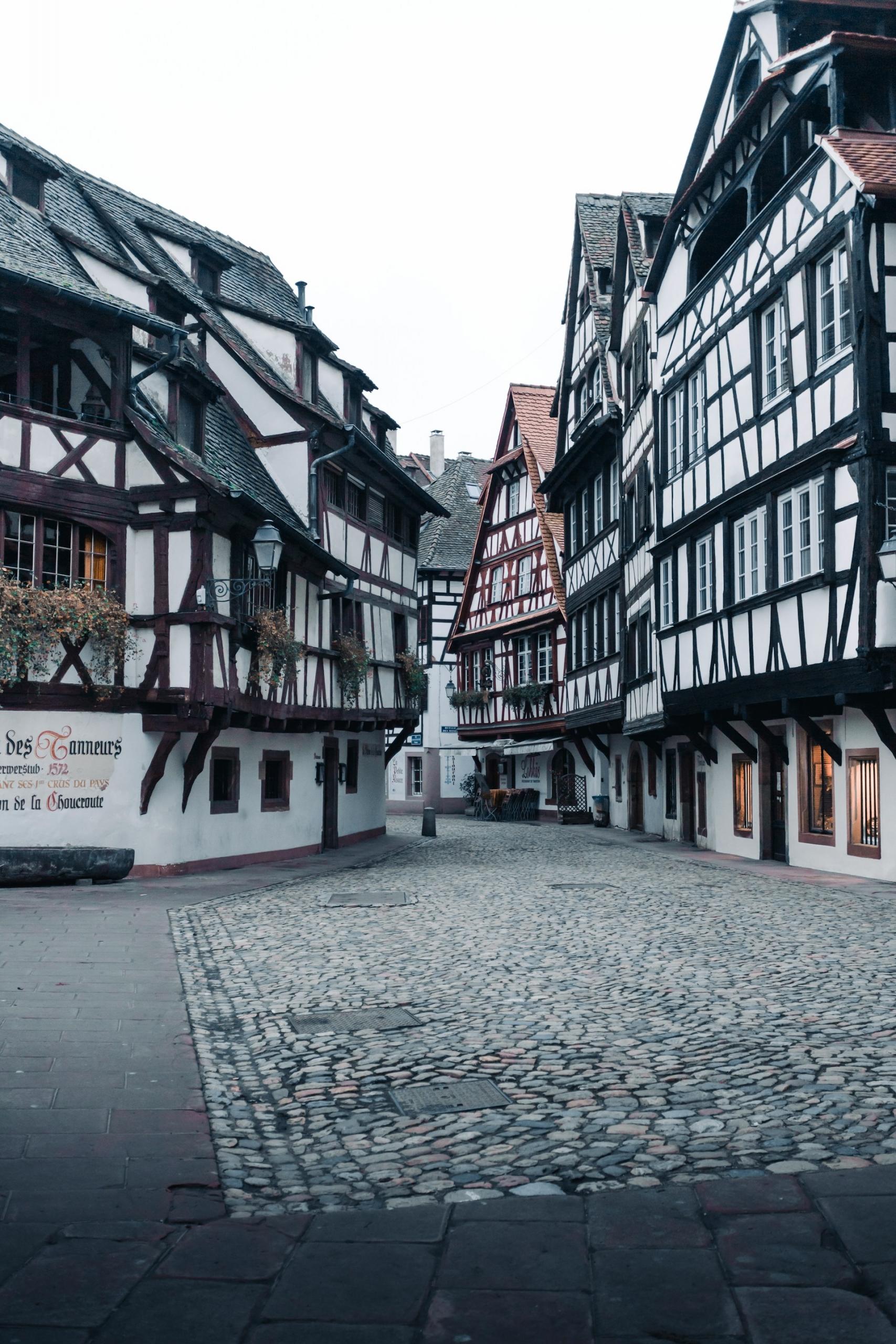
This cultural region was caught in a tug-of-war between France and Germany for centuries. Now firmly within France's borders, all the essential French phrases you learned ahead of your bucket list trip will serve you well.
Should you only have time for a brief stopover, Colmar, Eguisheim, and Bergheim are the must-see villages. The latter two are late-medieval, wholly fortified towns. Colmar is a good starting point for your explorations.
Getting There
By train: LVG Est high-speed rail line serves the entire area. Britons can get here via Eurostar, with a change at Lille. Tickets start at £50.
By car: routes A4, A5 and A26 all pass through this area.
What it Costs
Touring the villages is free.
Best Times to Visit
Colmar is the second-driest city in France; perfect for walking around all year. Late Spring to Late Autumn are generally the best times to visit.
Chamonix-Mont-Blanc
Mont-Blanc is the highest peak in Europe - 4 810 metres high. It's perpetually show-covered, hence its White Mountain designation. Still, hiking its slopes is not difficult, as this enthusiast shows.
Chamonix is a small town at the base of the mountain. It's a great place to start your climbing adventure. You can unwind afterwards, taking in a meal and relaxing in a chalet.
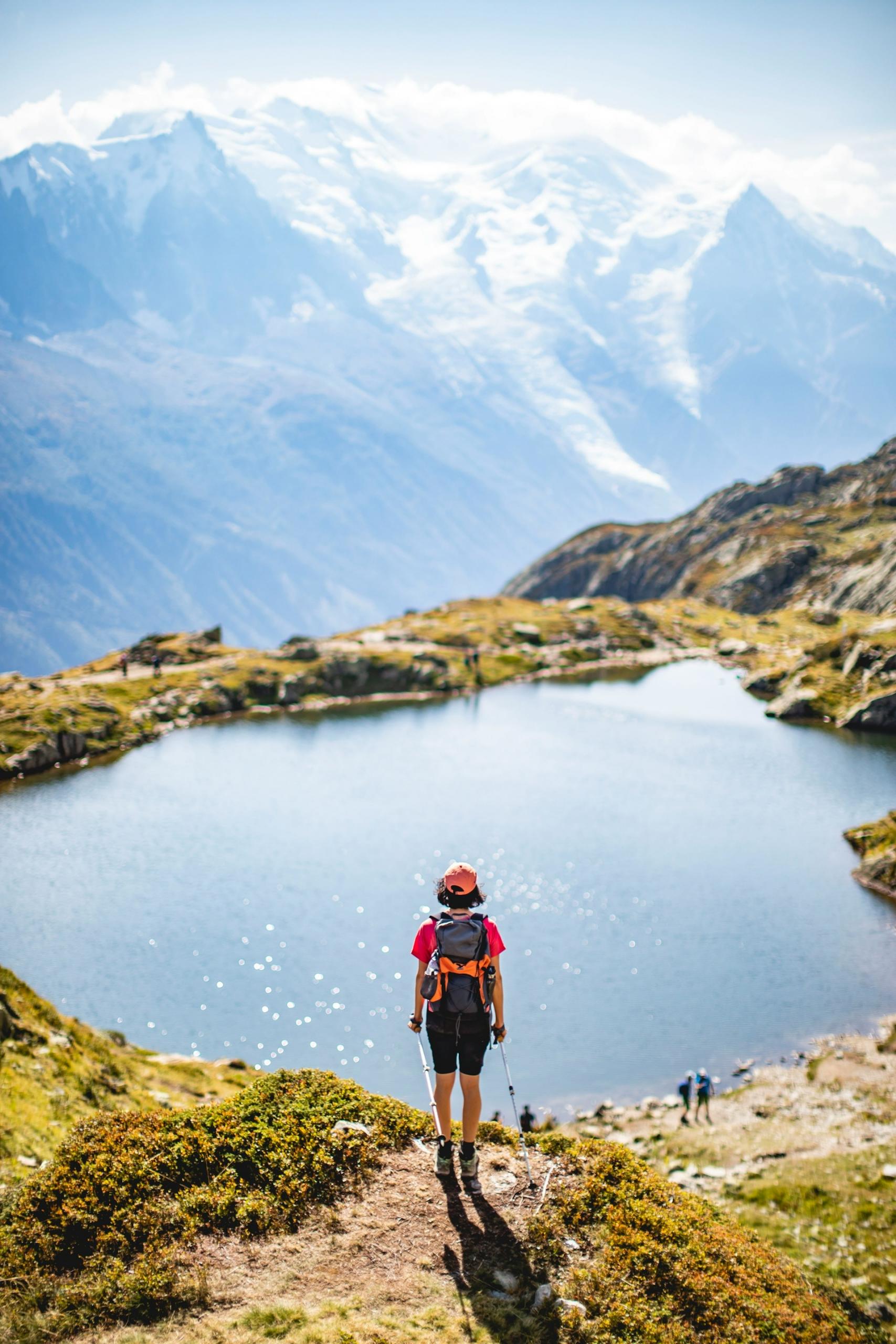
Getting There
By Plane: it's more practical to fly into Geneva, and then riding the Chamexpress bus for the 90 km stretch.
By train: the standard route from any French city passes through Geneva and Martingny.
By car or bus: the A40 provides a direct connection. Flixbus runs regular routes from Geneva.
How Much it Costs
Hiking costs nothing. Museum entries cost €6; cable car day passes start at €65.
Best Times to Visit
This region is windy and cold year-round; expect inclement weather. Summer is the best time to visit, but bring winter attire!

Côte d'Azur - The French Riviera

You could spend two weeks in the southeast region of France and still not take in all it has to offer. It is France's most fashionable coastline, featuring Monaco, Cannes, and St Tropez. Turning inland, you'll find Provence's lavender fields, the Gorge du Verdon - France's 'Grand Canyon', and assorted ski resorts.
Getting There
By plane: Nice airport serves this region.
By train: by express train from Paris to Cannes or Nice, or by high-speed rail to Marseille.
By car: beware of hills and curves as you drive the A8 into the region.
Catch the high-speed boat from Nice to Corsica for water sports and historical sites.
How Much it Costs
This is one of France's most expensive areas. Still, lolling around on beaches and walking around is free.
Best Times to Visit
Activities in France for tourists happen year-round on the Côte d'Azur!
Carcassonne - La Cité
You're right to think you've seen this medieval fortress before. It formed the backdrop for the film Robin Hood - Prince of Thieves. This UNESCO World Heritage Site ranks among the most famous landmarks in France.
Besides the Cité, be sure to tour the cathedral, built in the 13th Century, and Château Comtal. If you've a strong stomach, also take in the torture museum.
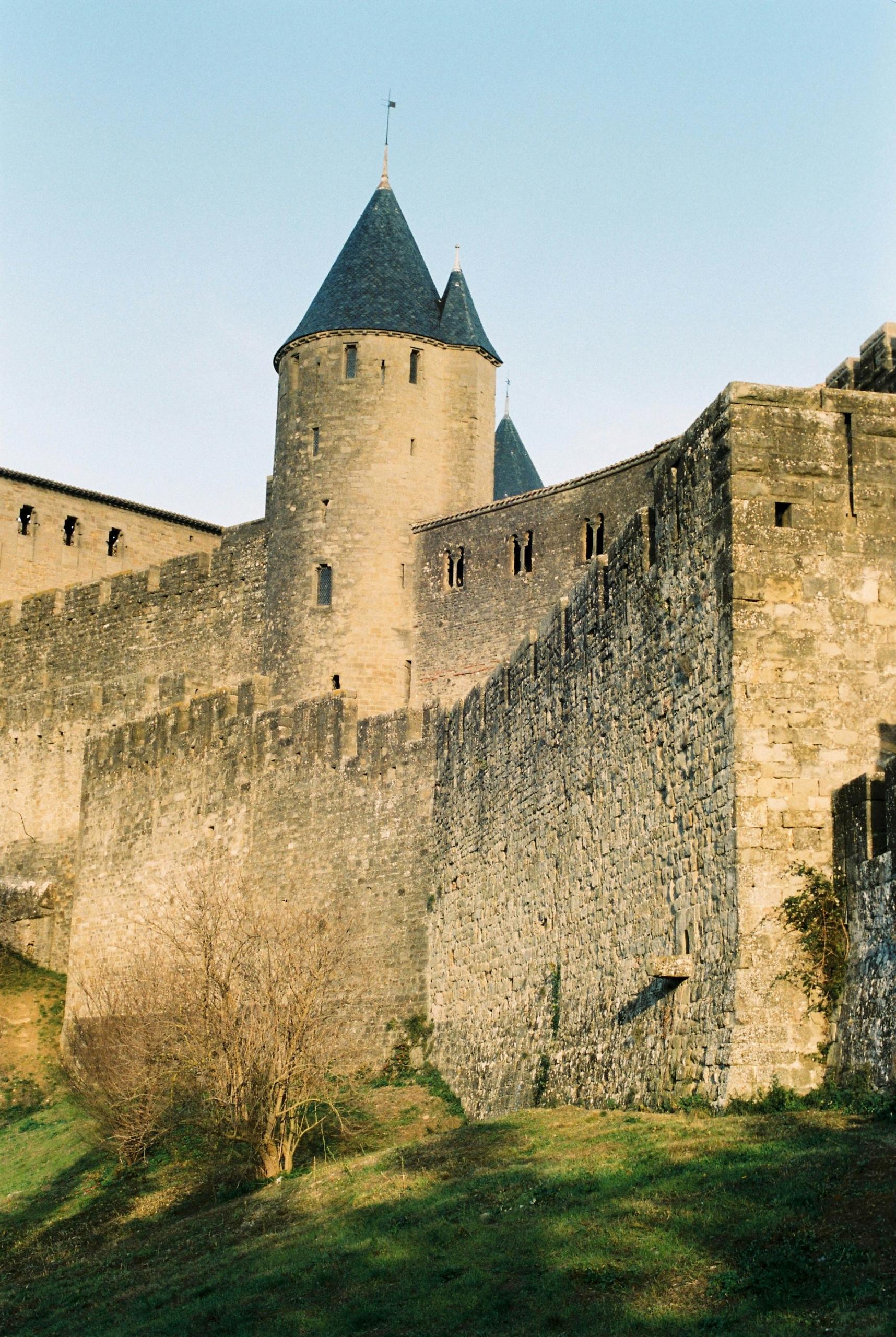
Getting There
By plane: Ryanair flies into Carcassonne Airport; a shuttle delivers you to the city.
By train: Intercity and high-speed trains from all over France stop at the Carcassonne train station.
By car: the A61 runs below the city.
How Much it Costs
Torture museum tickets: adults €11; children €8.5.
Best Times to Visit
Mid-April to the end of October. Torture museum operating hours: 10:00 to 17:00 daily.
Plan an overnight stay to experience the fortress minus its tourist hordes.
Biarritz
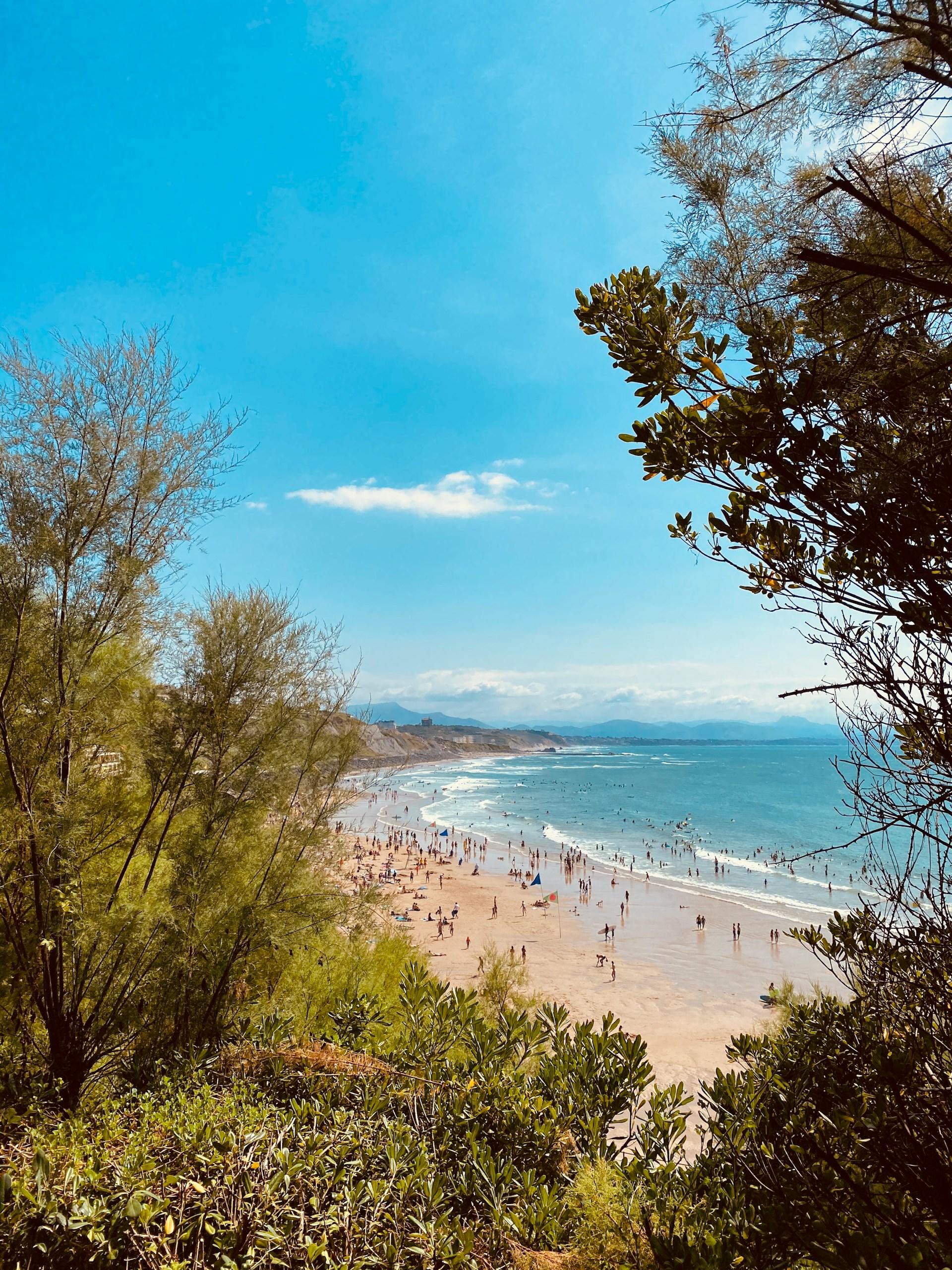
If the French Riviera is too rich for your blood, Biarritz is the perfect alternative. It lies on the Atlantic coast, 35 kilometres north of the Spanish border. You'll find casinos there, along with other resort activities in France for tourists.
Biarritz is renowned for its surfing culture. If you don't surf, you can lounge on the main beach. You might also relax in a spa or take part in nature activities.
Getting There
By plane: daily direct flights from Stanstead and Paris.
By train: from various cities in France, with transfers.
By car, from:
- Paris: A10, N10, A63 (E05)
- Lyon: A7, A9, A61, N117, A64 (E15-E80)
- Bordeaux: A63
- Marseille: A54, A9, A61, N117, A64 (E15-E80)
How Much it Costs
The Thermes Marins sea spa costs €17 for a half-day pass. Bike and other sports equipment rental prices vary. Beach access is free.
Best Times to Visit
Biarritz ranks among France's wettest cities. The summer months are the best to enjoy the beaches.
Arcachon - Dune du Pilat
The Arcachon beach lies roughly 55 kilometres southwest of Bordeaux. On their own, the town and beaches rank among the Top 10 French tourist attractions. However, the Pilat Dune is Arcachon's main claim to fame.
The Pilat is Europe's largest sand dune. It stretches for three kilometres and stands 110 metres high. It moves inland five metres per year. This dune is one of the most famous landmarks in France.

Getting There
With Bordeaux as your starting point, drive south on A63 to exit 22. Route A660 takes you into Arcachon. You may also take the train; the TGV high-speed train from Paris (Montparnasse) to Arcachon runs only during the summer.
How Much it Costs
Climbing the Pilat is free; so are the beaches.
Best Times to Visit
Arcachon enjoys a mild climate, suitable for visits nearly year-round.
Dordogne - the Lascaux Caves
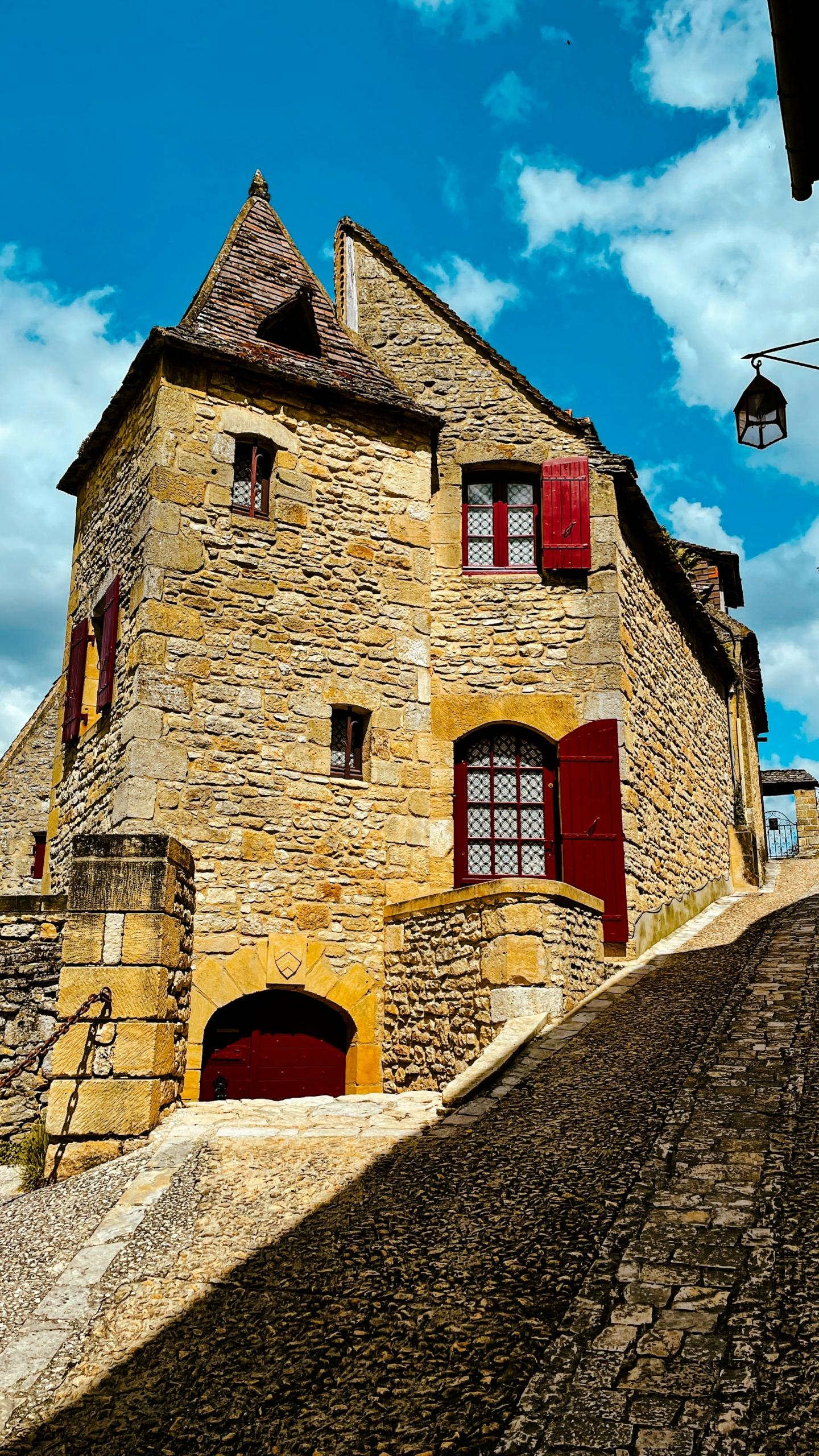
In 1940, a boy walking his dog discovered the entrance to a cave. He explored it with a few mates, finding the walls covered in drawings of beasts. Their mind-blowing discovery made these caves one of the most famous landmarks in France.
The entire region is now an archaeological treasure trove. Besides touring the caves, you'll enjoy its many hiking trails and the castles that dot the landscape. You may even canoe the Dordogne River; it's the best way to string the region's towns together.
Getting There
You can get to Dordogne by car, via the A20, and then the A89 to Périgeux. From there, you'll find many routes to Montignac, the town closest to the caves.
How Much it Costs
Lascaux tickets cost €22 (13 and up) for guided or 'free' tours; €14.50 for children.
The actual caves are off-limits. Tourists may view a full replica of the cave at Lascaux IV.
Times to Visit
Summer months: 8:30 to 21:00; winter hours: 10:00 to 18:00
Auvergne - Puy-de-Dôme
This outdoors paradise is often overlooked as one of the Top 10 French tourist attractions. The Auvergne Volcanoes Nature Park is the largest volcanic cluster in Europe. The Puy-de-Dôme is the park's tallest volcano.
Besides hiking, biking and paragliding, visitors may relax in the area's spas, and tour medieval towns and castle ruins. Plan your itinerary around all the top sites so you don't miss anything!
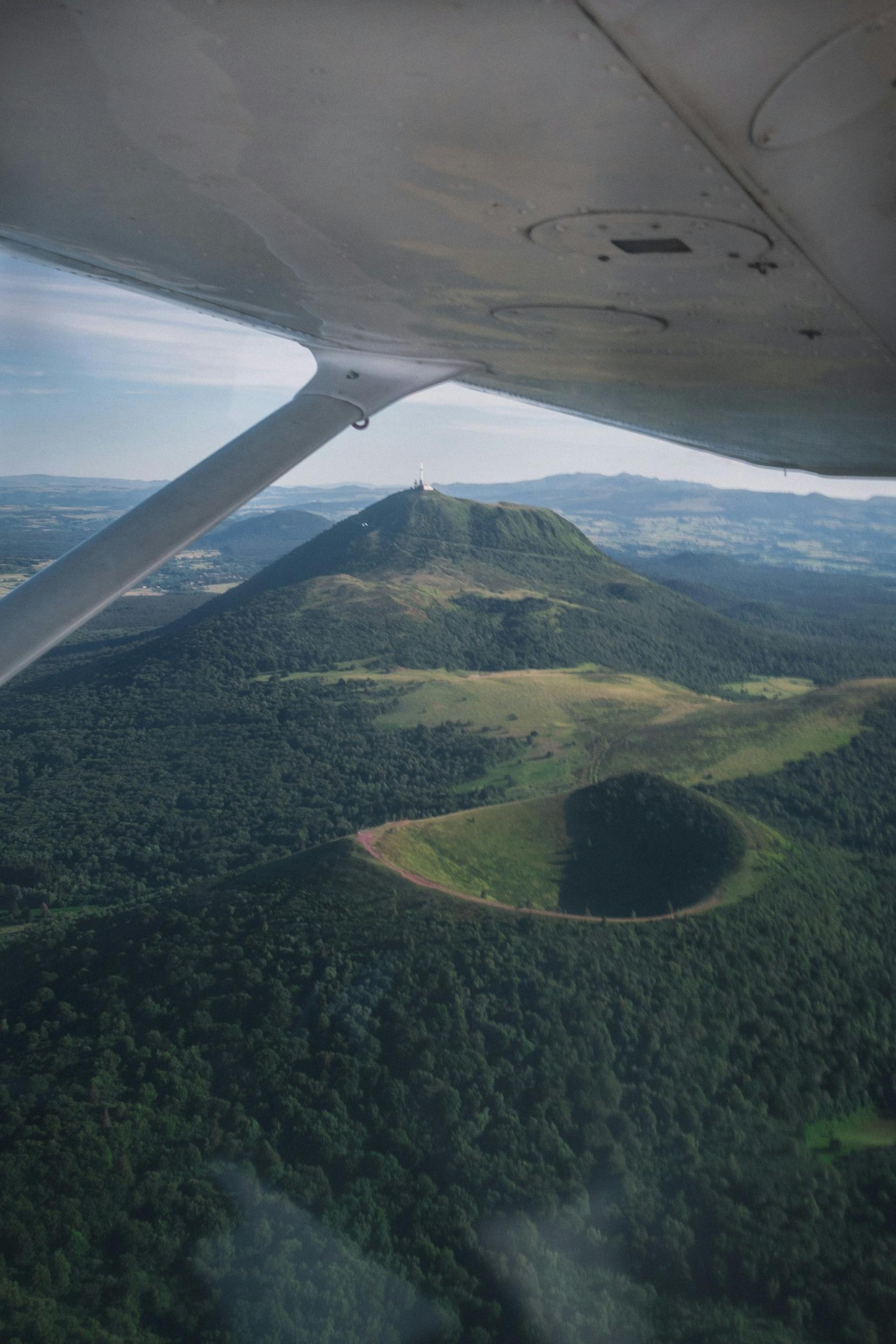
Getting There
By plane: fly from the UK into Clermont-Ferrand airport.
By train: from any major French city
By car: the A75 runs through Auvergne.
How Much it Costs
Outdoor pursuits are free, particularly if you bring your own equipment. Museums and spa sessions costs only a few Euros.
Best Times to Visit
Best during the summer months, unless you plan to ski. In which case, winter is better!
Île-de-France - Paris
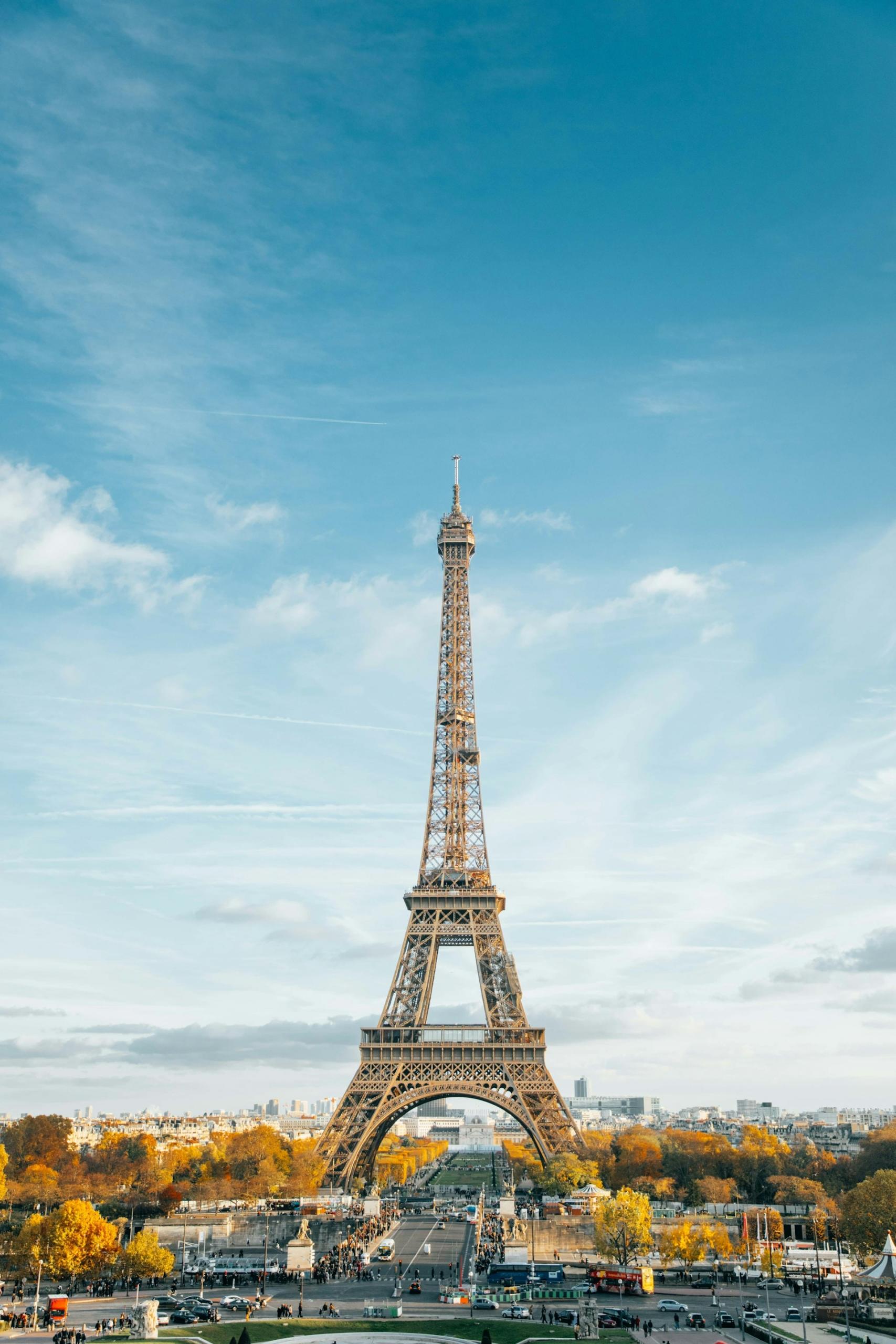
We end our grand tour of France in the City of Lights. Here, you can climb the Eiffel Tower, stroll along the Seine and the Champs Elysées, prowl through the Catacombs and explore the Louvre.
Besides those famous landmarks in France, you can ramble through Montmartre, take in a ballet at Opéra Garnier, or roam through Père-Lachaise Cemetery.
Getting There
By plane: Paris' three commercial airports all offer shuttles into the city.
By train: The Eurostar connects London St Pancras to Paris' Gard du Nord (North train station)
By car: 3.5 hours from Calais via A16
How Much it Costs
Louvre tickets are €22; Catacombs: €29 (€10 for children); Eiffel Tower (lift to the top): €29,40. Walking around remains free, as ever.
Best Times to Visit
Paris has something to offer year-round. Follow these tips to plan your trip so you'll get the most out of your travels!
There's no denying that France is one of the best countries in the world for tourists. We want to hear from you - what are you most looking forward to visiting in France? Take a vote in our poll ?
What's the best place to visit in France?















